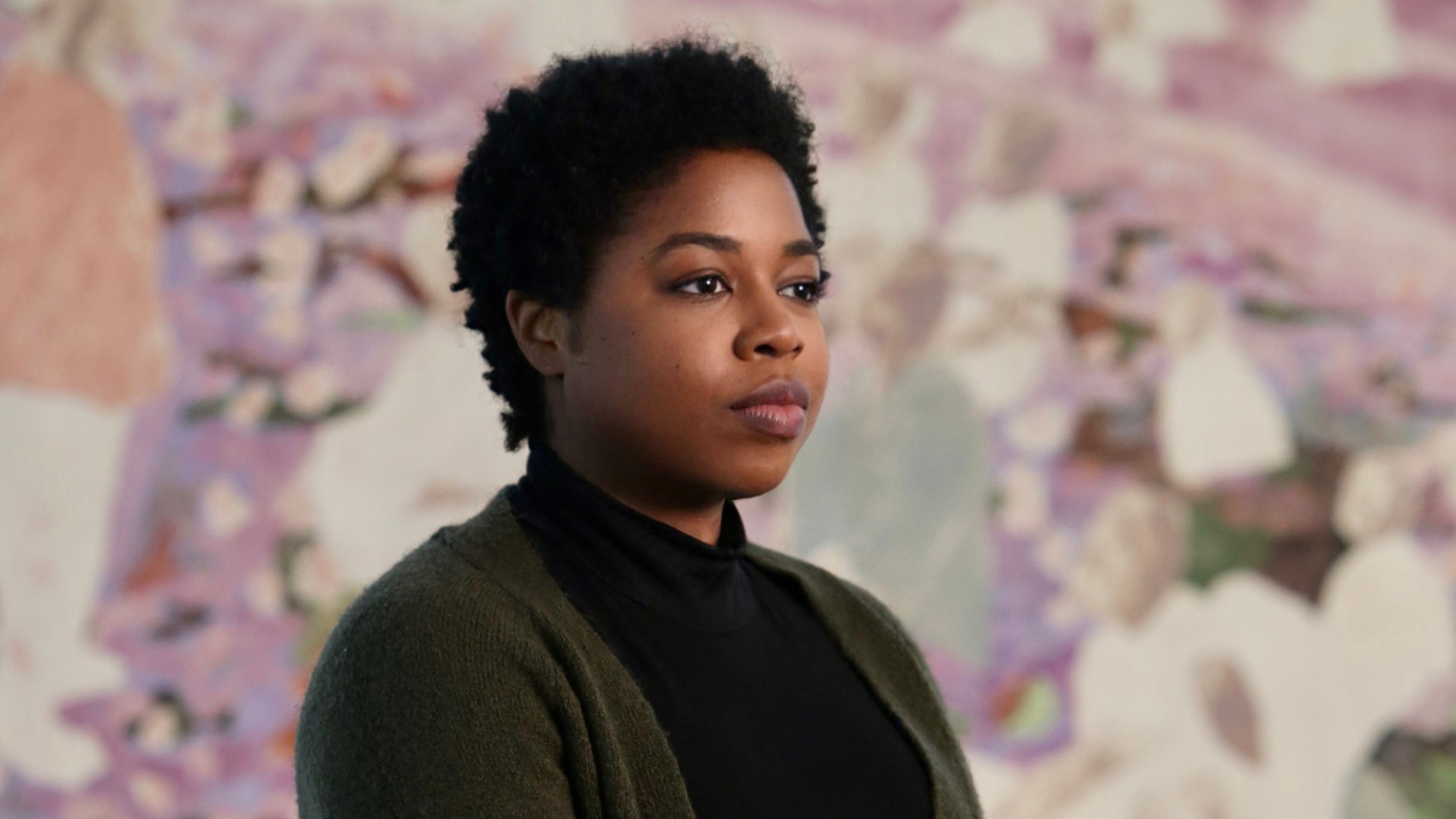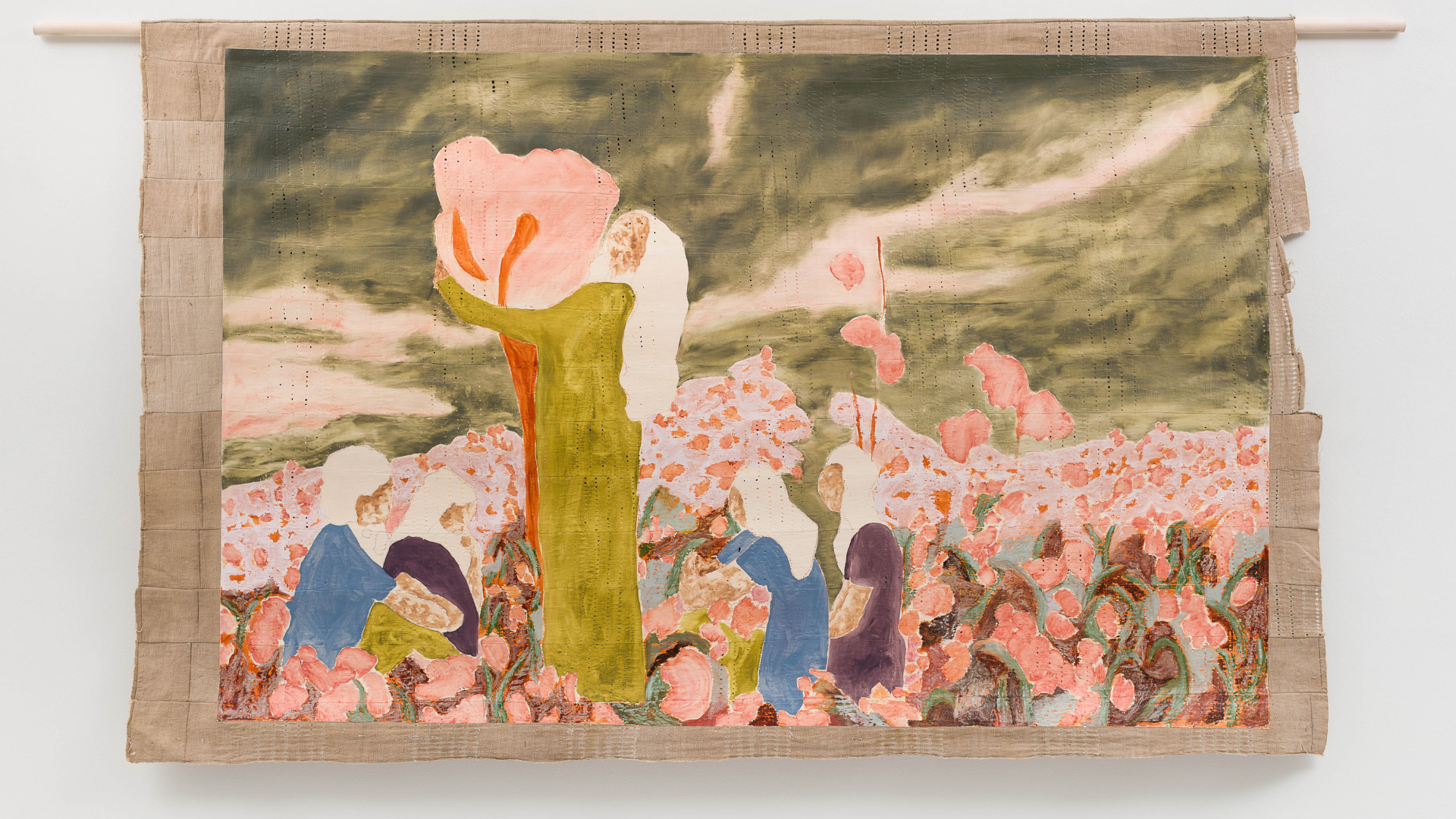This summer, Arnolfini invites audiences to journey into the lush landscapes of Nigerian artist Nengi Omuku’s exhibition 'The Dance of People and the Natural World.'
In her work, Omuku immerses human figures within nature, highlighting the relationship between both individual and collective thought and ideas of belonging. These psychological spaces move beyond traditional hierarchies of western landscape painting, allowing both nature and humans, and past and present to coexist.
A sense of temporality is deeply embedded in her choice of material, sanyan, a pre-colonial Nigerian textile woven from moth silk and cotton and used traditionally for celebratory clothing.

Image: Nengi Omuku, credit Pippy Houldsworth Gallery & Full House Partners
The Dance of People and the Natural World brings together works first shown at Hastings Contemporary where the exhibition began in 2023. It includes the monumental work Eden, in which figures travel throughout a multicoloured landscape, under pale blue and purple skies, alongside new additions such as Quorum (2022) and Rumours of War (2023) drawn from the same period.
Omuku, who lives and works in Lagos, was also trained in floristry following in the footsteps of her horticulturalist mother whose own delicate coloured pencil drawings have inspired Omuku’s work.
Her paradisical landscapes and gardens are sometimes inspired by real places, such as Monet’s Garden in Giverny, France, and the International Institute of Tropical Agriculture in Ibadan, Nigeria, where Omuku spent time on a Kobomoje Artist Residency. Her works often combine memories of her mother’s garden alongside imagined places, allowing flora and fauna to take on fantastical otherworldly forms and colours, as well as more familiar shapes of plants like Monstera or Heliconia.

Image: Quorum by Nengi Omuku, credit Nengi Omuku & Mark Blower
Yet, whether real or imagined, there is a sense that these are landscapes to long for or to seek solace in as Omuku looks back at happier times, a continual theme since her solo exhibition Parables of Joy (2022) in which her figures marked the ‘slow passage of time.'
Referring to her work as ‘a state of mind’ Omuku’s figures often arise from collaged images drawn from archival photography and the media.
These figures appear in acts of ritual or in solitary moments, such as Red Velvet (2022) in which a seated woman in cerise skirts leans against an ochre tree and burnt orange background looking outwards beyond the life contained in Omuku’s painting.
Omuku’s rich and dreamlike colour palette has been strongly influenced by the muted tones of the Sanyan cloth she uses as a support, bringing together Western traditions of oil painting – from her studies at the Slade School of Art in London - with Nigeria’s rich legacy of textile craftmanship: “The reason why I work with Sanyan has to do with nostalgia, longing for a time in Nigeria where things were beautiful, full of meaning, and textiles were something that were celebrated so profoundly" - Nengi Omuku.
Upon returning to Lagos in 2012, Omuku began collecting Sanyan, carefully sourcing and storing each piece and waiting for the right work to bring it back to life, such as with Wade in the Water (2023), in which figures are half submerged in a pool of water or lounge beside it on grassy banks.
Hung away from the gallery wall or suspended from ceilings, Omuku allows the audience to see both sides of each painted cloth, which she refers to as a ‘piece of art in its own right’, revealing also the original symbolic artistry and patterns, such as prayers of fertility woven within. During a recent residency at Black Rock Senegal Omuku learnt to spin cotton under the tutelage of contemporary female spinners employed by Fatim Soumare weavers on the island of Mar Loj, processing the raw material for herself. She now works with spinners outside of Lagos to create Sanyan cloths to size.
This commitment to her practice is also apparent in the message of therapeutic hope contained within her landscapes, which often create moments of rest and repose. Inspired by a commission from London based charity Hospital Rooms to paint a mural at Maudsley Hospital, Omuku has subsequently founded her own charity The Art of Healing in Lagos, which recognises the healing power of art.
Nengi Omuku’s The Dance of People and the Natural World is one of two summer exhibitions at Arnolfini alongside Adébayo Bolaji: In Praise of Beauty.
The Dance of People and the Natural World was originally exhibited at Hastings Contemporary and adapted for Arnolfini.
Related
Comments
Comments are disabled for this post.













